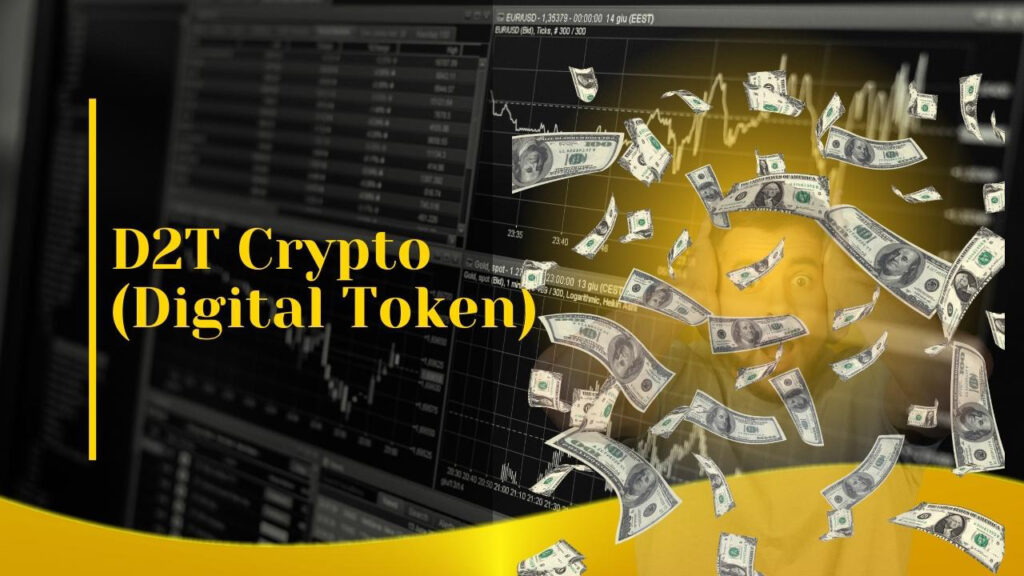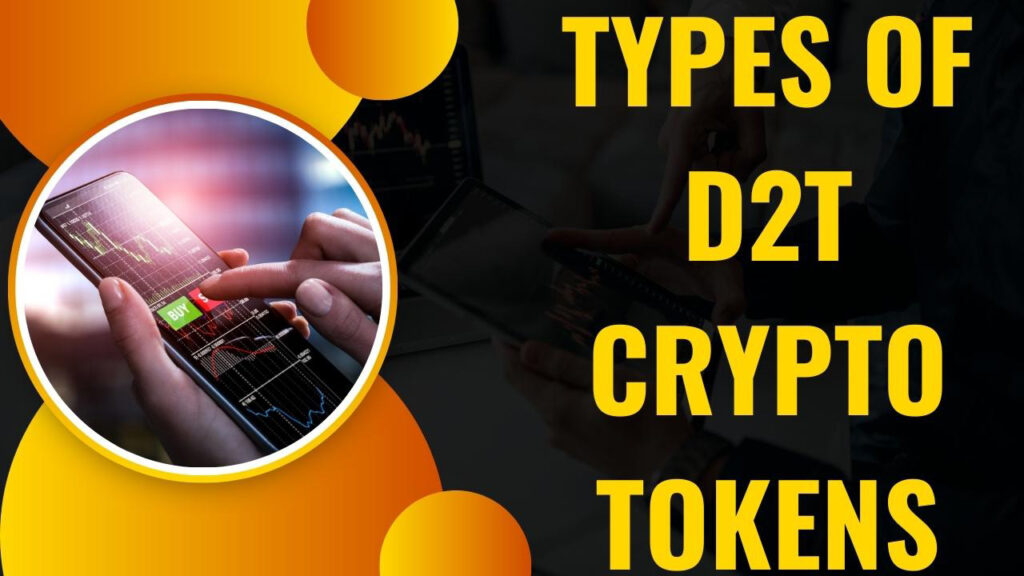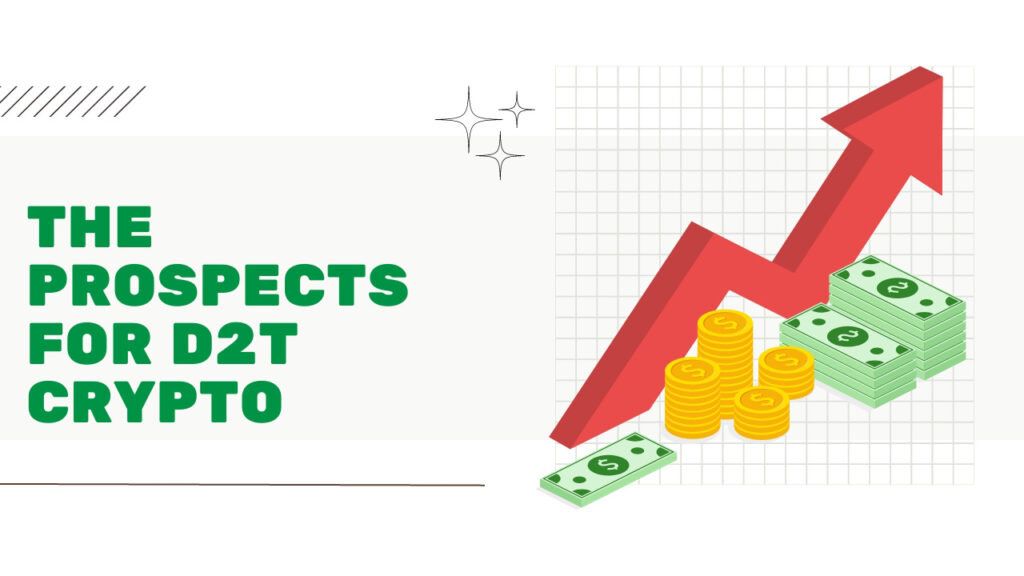
A Comprehensive Guide to Digital Tokenization: Understanding D2T Crypto
D2T (Digital-to-Token) cryptocurrency has become a revolutionary idea in the world of cryptocurrencies. D2T crypto uses the potential of digital tokenization to transform a number of sectors. In-depth analysis of D2T crypto’s definition, advantages, workings, token kinds, applications, difficulties, regulatory environment, and possibilities for the future are provided in this article.
Digital tokenization: What is it?
Real-world assets or rights are transformed into digital tokens through a process known as “digital tokenization.” Then, on a blockchain network, these tokens are kept and used for transactions. Tokenization makes it possible to hold a portion of tangible or intangible assets, increases liquidity, and makes asset transfers less complicated.
Gains From D2T Crypto:
D2T crypto has several benefits over conventional systems. The first benefit is that it makes fractional ownership possible, allowing people to invest in assets that were previously out of reach due to prohibitively high fees or laws. Second, tokenization improves liquidity by making asset transfers easier and more smooth. D2T crypto also eliminates middlemen, simplifies transactions, boosts transparency, and offers universal accessibility.
The Tokenization Process:
Tokenization is accomplished by a number of processes. First, the item to be tokenized—whether it be real estate, a work of art, or intellectual property—is recognized. The tokenization process is then governed by a legal and technological framework. The asset is split into marketable digital tokens after the framework is established. Then, through a safe and legal platform, these tokens are made available to investors. The ownership of the tokens is then documented on the blockchain after trading.
Types of D2T Crypto Tokens:

There are three main categories of tokens in the D2T crypto world: utility tokens, security tokens, and non-fungible tokens (NFTs).
Service Tokens:
Access to a specific good or service inside the blockchain ecosystem is made possible through utility tokens. They may be exchanged for products and services and are used as a medium of trade. Decentralized apps (DApps) rely heavily on utility tokens to encourage user participation in the network.
Tokens of Security:
The ownership of an underlying asset, such as stock in a corporation or debt in a construction project, is represented by security tokens. These tokens provide investors particular rights, such as dividends or voting power, and are governed by securities laws. A more regulated and legal method of asset tokenization is provided by security tokens.
NFTs, or non-fungible tokens:
Non-Fungible Tokens (NFTs) are distinctive digital assets that show who owns or can vouch for a certain good or piece of information. NFTs are indivisible and have unique properties as opposed to fungible tokens, which are interchangeable and include Bitcoin and Ether. NFTs have attracted a lot of interest from the art and antiques sector.
Ethereum Blockchain and D2T Crypto:
D2T cryptocurrency and blockchain technology are closely related. The decentralized infrastructure required for safe and open transactions is provided by blockchain. D2T crypto guarantees the integrity and traceability of digital tokens by making use of the immutability and consensus processes of blockchain.
Smart Contracts’ Function in D2T Crypto:
D2T crypto relies heavily on smart contracts. These self-executing contracts have predetermined rules and conditions built into them. Aspects of tokenized transactions that can be automated include ownership transfers, income sharing, and compliance enforcement. Smart contracts increase efficiency and cut costs by doing away with the need for middlemen.
Read More: Big Eyes Crypto
Uses of D2T Cryptography:

D2T crypto has uses across a range of sectors. Several prominent use cases include:
Actual Estate:
Tokenization enables investors to take part in profitable real estate markets with fewer entry barriers by allowing fractional ownership of real estate holdings. D2T crypto promotes fractional ownership, streamlines real estate transactions, and increases market liquidity.
Collectibles and Art:
By making it possible to create and trade NFTs, D2T crypto has revolutionized the art and collectibles sector. In order to guarantee provenance, authenticity, and a transparent ownership history, artists might tokenize their works of art. Digital treasures are simple and secure for collectors to buy, sell, and exchange.
Supply Chain Administration:
D2T crypto increases traceability, lowers fraud, and boosts supply chain effectiveness by tokenizing supply chain assets and records. Transparency and trust in the supply chain ecosystem are made possible by smart contracts, which automate transaction verification, authentication, and execution.
D2T Crypto Challenges and Risks:
D2T cryptocurrency has a lot of potential, but it also has its share of difficulties and dangers. The requirement for interoperability across various blockchain networks, legislative uncertainties, security flaws, and scalability problems are a few of the main obstacles. D2T crypto is still in its infancy, hence strong education and awareness are needed to promote wider use.
Legal Framework for D2T Crypto:
Regulations governing D2T cryptocurrency are currently developing. Different legal systems take different stances on tokenization and cryptocurrency. Participants in the D2T crypto ecosystem must be aware of the regulations and rules that apply in their particular countries.
The Prospects for D2T Crypto:

D2T cryptocurrency looks to have a bright future. We may anticipate a rise in the use of D2T cryptocurrency across businesses as blockchain technology develops and regulatory frameworks are better established. Traditional company structures will change as a result of the opportunity for fractional ownership, increased liquidity, and quicker transactions.
Conclusion:
In conclusion, by bringing new levels of accessibility, liquidity, and efficiency, D2T crypto and digital tokenization have the ability to change whole sectors. D2T crypto makes use of blockchain technology and smart contracts to enable fractional ownership, improve transparency, and streamline asset transfers. For widespread acceptance, however, issues like legislation, security, and scalability must be resolved. D2T cryptocurrency has a bright future ahead of it, one that will provide exciting new prospects to investors, companies, and people alike.
FAQs:
- Is D2T cryptocurrency same to conventional cryptocurrency?
Contrary to popular belief, D2T crypto extends beyond cryptocurrencies like Bitcoin and Ethereum. Its main goal is to tokenize real-world assets and rights in order to promote fractional ownership and increased liquidity.
- Are electronic tokens safe?
Blockchain technology is used by digital tokens because it offers strong security through decentralized consensus procedures. But it’s crucial to adhere to proper practices and keep tokens in safe wallets.
- Can I buy D2T cryptocurrency?
Yes, you may invest in D2T cryptocurrency by taking part in token offerings or buying tokens on exchanges for digital currencies. But it’s crucial to do careful research and take the hazards into account.
- Are there regulatory issues with D2T cryptocurrency?
Yes, D2T cryptocurrency regulatory frameworks are still developing. Regarding tokenization and cryptocurrency, various nations take different stances. It’s essential to abide by the local rules and regulations that are relevant.
- What are the possibilities for D2T crypto in the future?
D2T cryptocurrency appears to have a bright future. We may anticipate more adoption and creative use cases across businesses as blockchain technology develops and regulatory clarity increases.
Стильные советы по выбору модных луков на каждый день.
Заметки профессионалов, события, все показы и шоу.
https://moismi.ru/info/704-kak-otlichit-originalnuyu-veshch-balmain-ot-poddelki-osnovnye-sovety/